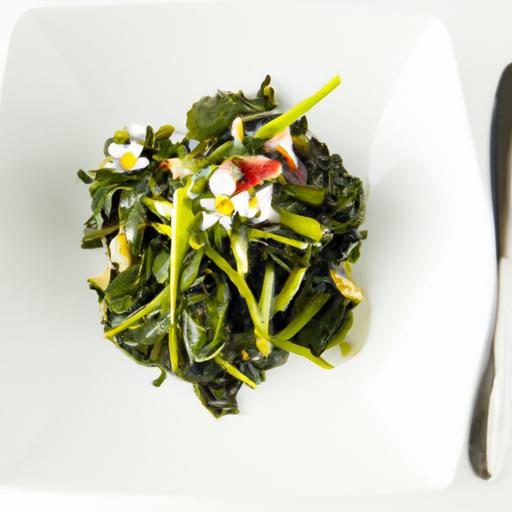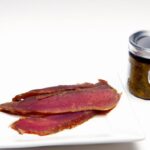Amidst the lush tapestry of wild landscapes, a humble green lies waiting to be discovered-curly dock. With its vibrant leaves and tangy bite, this wild edible has quietly nourished foragers for generations, offering a flavorful and nutritious addition to your culinary adventures. If you’re new to the world of foraging, peeling back the layers of nature’s pantry can feel like stepping into an enchanted unknown. This beginner’s guide to foraging for curly dock will illuminate the path, from identifying this leafy treasure to harvesting and preparing it safely. Get ready to awaken your senses and embrace the wild greens that might just be growing in your own backyard.
Understanding Curly Dock: Identification, Habitat, and Foraging Tips
Foraging for Curly Dock introduces you to a versatile wild green cherished for its tart, spinach-like leaves and robust nutritional profile. Native to Europe and Asia, this resilient plant has thrived globally, often found along roadsides, meadows, and riverbanks where nutrient-rich soils foster its growth.
Recognizable by its wavy, deeply ribbed edges and vibrant green, arrow-shaped leaves, curly dock grows up to three feet tall with slender reddish stems topped with small brown seed clusters. When identifying, ensure the leaves are free from insect damage and harvested from areas untouched by pesticides or pollution to guarantee safety.
To forage curly dock safely and responsibly, target young leaves in spring and early summer when their flavor is tender and less bitter. Avoid late-season picks, which can become tough or overly acidic. Carry a sharp pair of scissors to snip leaves cleanly, allowing the plant to regrow, and always cross-check with reliable wild plant guides or apps.
Preparing and Cooking Curly Dock Recipes to Enjoy Wild Greens
Before cooking, rinse the leaves thoroughly to remove grit and trim any tough stems. The gentle tang of curly dock shines when lightly sautéed, steamed, or folded into hearty soups. This recipe highlights the bright freshness of wild greens in a simple garlic and lemon sauté that pairs wonderfully with rustic bread or grilled fish.
Prep and Cook Time
- Prep Time: 10 minutes
- Cook Time: 8 minutes
Yield
- 4 servings
Difficulty Level
- Easy
Ingredients
- 4 cups fresh curly dock leaves, washed and trimmed
- 2 tbsp olive oil
- 3 cloves garlic, minced
- 1/2 tsp sea salt
- 1/4 tsp freshly ground black pepper
- 1 tbsp fresh lemon juice
- Optional: pinch of crushed red pepper flakes
Instructions
- Heat olive oil in a large skillet over medium heat until shimmering.
- Add minced garlic and sauté for 1 minute until fragrant, stirring constantly to avoid burning.
- Toss in curly dock leaves and stir to coat them evenly with oil and garlic.
- Sauté the greens for 5-7 minutes until tender but still vibrant green, stirring occasionally to prevent sticking.
- Season with sea salt, black pepper, and crushed red pepper flakes if using.
- Remove from heat, drizzle fresh lemon juice over the sautéed greens, and gently toss to combine.
- Serve immediately for the freshest taste and best texture.
Chef’s Notes
- Variation: Add a tablespoon of toasted pine nuts or sprinkle crumbled feta cheese to add texture and creaminess.
- Substitution: If curly dock is not available, sorrel or spinach can be used, but note their flavor profiles differ slightly.
- Troubleshooting: If your sauté becomes bitter, try blanching the leaves for 30 seconds in boiling water before cooking to soften the acidity.
- Make-ahead: This dish is best enjoyed fresh but can be stored in an airtight container in the fridge for up to 2 days; reheat gently.
Serving Suggestions
Present your sautéed curly dock alongside crusty artisan bread or serve as a vibrant side to grilled chicken or fish. Garnish with a lemon wedge and a sprinkle of finely chopped fresh parsley for a pop of color and freshness. A drizzle of high-quality extra virgin olive oil just before serving enhances the earthiness of the greens.
| Nutrient | Per Serving |
|---|---|
| Calories | 70 |
| Protein | 2.5g |
| Carbohydrates | 6g |
| Fat | 5g |
Learn more about curly dock’s ethnobotanical uses from the U.S. Forest Service. For additional wild green culinary insights, check out our complete foraging wild greens recipes guide.

Q&A
Q&A: Foraging for Curly Dock – A Beginner’s Guide to Wild Greens
Q1: What exactly is curly dock, and why should I consider foraging it?
A1: Curly dock (Rumex crispus) is a hardy wild green with crinkly, elongated leaves that often grow in fields, roadsides, and disturbed soils. It’s a nutritional treasure chest, rich in vitamins A and C, iron, and antioxidants. Foraging curly dock invites you to reconnect with nature’s pantry, adding fresh, wild flavors and wholesome greens to your meals.
Q2: How can I identify curly dock in the wild without confusing it with harmful plants?
A2: Look for tall stalks covered in broad, wavy-edged leaves that curl at the edges-hence the name. Its roots are long and tap-like. The plant often sports reddish-brown seed clusters in late summer. Beware of plants that look similar but have smooth or jagged leaves or different seed pods. Using a reliable foraging guide or app can help confirm your find.
Q3: When and where is the best time to forage curly dock?
A3: Early spring and late summer are ideal, as young leaves are milder and less bitter. Curly dock thrives in sunny spots with moist soil but is tough enough to appear in a variety of environments, from urban edges to countryside fields. Always forage in areas free from pesticides and pollution.
Q4: Are there any preparation tips to make curly dock taste better and safer to eat?
A4: Yes! Curly dock has oxalic acid, which can cause bitterness and may be harmful in large amounts. Blanch the leaves in boiling water for 1-2 minutes, then drain and rinse to reduce bitterness and oxalate content. After that, you can sauté it, add it to soups, or toss it in salads, balancing its tartness with fats like olive oil or creamy dressings.
Q5: What are some creative ways to enjoy curly dock in my kitchen?
A5: Try curly dock as a substitute for spinach in quiches, frittatas, and stir-fries. It pairs beautifully with garlic, lemon, and nuts. For a wild twist, mix it into pesto or blend fresh leaves into green smoothies. The slightly tangy flavor adds a zing to classic recipes.
Q6: Are there any precautions to keep in mind when foraging and eating curly dock?
A6: Absolutely. Don’t overconsume curly dock due to its oxalate content, especially if you have kidney issues. Avoid harvesting from polluted areas, and always forage sustainably-take only what you need, leaving enough for the ecosystem and other foragers. Washing leaves thoroughly is a must to remove dirt and bugs.
Q7: How can foraging curly dock contribute to my wellbeing beyond just nutrition?
A7: Foraging connects you with the environment, sharpening your observation skills and encouraging physical activity. It fosters mindfulness as you tune into the rhythms of nature and seasons. Plus, using wild greens reduces reliance on grocery stores and supports eco-friendly eating.
Embrace the wild green bounty underfoot-curly dock is not just a weed but a delicious, nutritious adventure waiting to be foraged and savored!
Final Thoughts
As you tuck this guide on foraging for curly dock into your mental wilderness toolkit, remember that every wild green you gather is a small celebration of nature’s generous tapestry. With its tangy flavor and impressive nutrition, curly dock invites you to explore beyond supermarket aisles and reconnect with the wild places around you. So next time you wander through fields or along trails, keep an eye out for those vibrant, crinkled leaves – your next delicious discovery is waiting just beneath the open sky. Happy foraging, and may your plates be as wild and wonderful as the greens you find!


